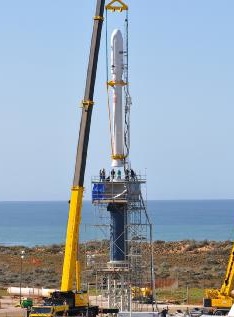Today was a travel day for me. I left the Washington DC area early this morning and arrived at my hotel in Lompoc, California at about 4:00 PM Pacific Time. Lompoc is just a few miles from the gates of Vandenberg Air Force Base, where OCO will be launched next week. Vandenberg AFB is located about 75 miles northwest of Santa Barbara…quite a drive from my flight arrival in Los Angeles. The long trip made me envious of the OCO observatory, which will go from Vandenberg to orbit in under 14 minutes! The launch site is right on the Pacific coast. Today was a beautiful, sunny day…let’s hope it stays that way for the next several days.
When I speak with friends and relatives about the OCO mission, they are usually surprised to learn it will not be launched from the Kennedy Space Center (KSC) in Florida. KSC is indeed the location from which NASA launches many of its high profile missions, such as the Space Shuttle and various interplanetary spacecrafts. For Earth observing satellites, the choice of launch site is very much dependent on the mission’s orbit requirements. In the case of OCO, it is a low-Earth orbit (or LEO) satellite that will fly in a near-polar, sun-synchronous orbit. A near-polar orbit means that OCO will fly over (or more correctly nearly over) both the north and south poles on every orbit. Sun-synchronous means that when OCO crosses the equator on each orbit, it will be approximately the same time of day on the ground below. So as the Earth rotates, OCO’s orbit remains in the same location relative to the sun.
The project passed a big milestone yesterday, when the observatory and launch vehicle were successfully erected at the launch pad, marking the first time the complete system has been assembled in its launch configuration. OCO will be launched on a Taurus 3110, manufactured by Orbital Sciences Corporation. This will be the first launch of this particular configuration of Taurus (although each of its stages has flown on other configuration launch vehicles). It is also the first time a Taurus will be used with a NASA satellite as its primary payload. One of the big efforts associated with this launch was completing the NASA certification of the launch vehicle. This is a lengthy, but thorough and necessary process (that includes testing, analysis, and documentation) managed by NASA’s Launch Service Program to ensure there is sufficient confidence in the system to proceed with launch. With the certification now complete, Taurus 3110 can be used for other NASA missions, including Glory, another Earth science satellite with a launch planned for later this year.
I plan to update this blog daily from now through launch, so please stay tuned.
